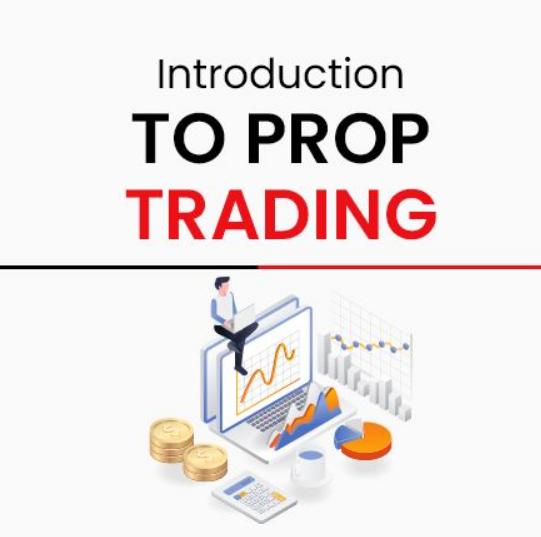Top 8 Futures Prop Firms Actually Paying in 2025: Proven Prop Trading Insights
In today’s dynamic financial landscape, prop trading continues to evolve with advanced backtesting techniques, real-time data integrations, and rigorous risk management. This comprehensive guide delves into the Top 8 Futures Prop Firms Actually Paying in 2025, featuring firms such as Bulenox, E8, Apex, and others. Our step-by-step approach is designed to equip both emerging and experienced traders with the actionable insights needed for success in prop trading.
Understanding Prop Trading and Its Unique Challenges
Prop trading, or proprietary trading, allows firms to trade using their own capital. This industry demands a blend of innovative strategies, robust risk management, and advanced technology. With regulatory requirements such as MiFID II in Europe and NFA rules in the US, firms must prioritize compliance alongside performance.
Key Challenges in Prop Trading
- Backtesting Pitfalls: Overfitting, survivorship bias, and look-ahead bias compromise strategy validity. Avoiding these pitfalls means using out-of-sample data tests and walk-forward optimization.
- Data Quality: The success of backtesting depends on reliable historical data—tick vs. bar data, data normalization, and filling gaps are critical challenges.
- Regulatory Compliance: With global frameworks like ESMA and MiFID II, prop trading firms must integrate compliance into their everyday operations.
Advanced Backtesting Concepts: Tools and Techniques
One of the most critical aspects of prop trading is ensuring that strategies are rigorously backtested. Traders use advanced tools not only to run historic simulations but also to automate optimization, parameter tuning, and scenario analysis.
Common Backtesting Pitfalls and Mitigation Strategies
Overfitting is a common issue that happens when a model is too closely tailored to past data. To mitigate this risk, integrate techniques like walk-forward optimization and out-of-sample testing. Leveraging platforms that support automated parameter optimization, such as QuantConnect and TradingView, can significantly reduce the likelihood of bias.
Walk-Forward Optimization vs. Traditional Backtesting
Walk-forward optimization extends beyond conventional backtesting by constantly updating parameters using more recent data. This approach not only helps in dynamic adjustments but also ensures that the strategy remains resilient in varying market conditions. Compare platforms like NinjaTrader and MetaTrader 5 to understand which best supports these advanced features.
Comparative Analysis of Leading Backtesting Tools for Prop Trading
Selecting the right automated backtesting tool can be a game changer for prop trading firms. Below, we compare popular platforms based on key features:
| Tool | Backtesting Features | Data Quality | Integration Capabilities | Pricing & Use Cases |
|---|---|---|---|---|
| TradingView | Vectorized and event-driven backtesting; integrated strategy tester | Extensive historical data, multiple asset classes | API integration with brokers and third-party analytics | Tiered pricing with free trial; ideal for retail and prop firms |
| MetaTrader 5 | Robust historical testing with MQL5 integration; handles commission and slippage | Comprehensive data feeds and market depth | API connections and broker integrations | Free demo; widely used in both retail and institutional setups |
| NinjaTrader | Advanced simulation including stress testing and scenario analysis | Deep historical data and real-time feeds | Integrates with various brokers and risk management platforms | Subscription-based; excellent for team collaboration in prop firms |
| QuantConnect | Algorithmic trading support with integrated parameter optimization | Rich dataset across equities, futures, and forex | API and cloud-based integration with various resources | Freemium model; best for quant teams and research-driven firms |
Case Studies in Prop Trading: Real-World Applications
Case studies from established prop trading firms provide valuable lessons. For example, one anonymous futures prop firm adopted a combination of MetaTrader 5 for robust backtesting and NinjaTrader for real-time execution. Their key challenge was adjusting strategy parameters to volatile market conditions. By using walk-forward optimization, they improved their Sharpe ratio by 25% and reduced drawdown by 15%.
Another case involved a firm experimenting with QuantConnect for algorithmic trading. The firm faced data quality issues initially but overcame these by sourcing high-resolution tick data. With automated parameter optimization, the strategy’s testing cycle became significantly faster, enabling more frequent updates and better risk management.
Integrating Backtesting with Live Trading: Best Practices
After backtesting, integrating results with forward testing is crucial. A structured approach helps in verifying that strategies perform consistently in live market conditions. Recommended steps include:
- Out-of-Sample Testing: Reserve a portion of historical data to test the robustness of the strategy.
- Paper Trading: Utilize platforms like TradingView or MetaTrader 5 to simulate real-market conditions without financial risk.
- Forward Testing: Transition to live markets cautiously while monitoring key metrics such as drawdown, profit factor, and Sharpe ratios.
Technical Integration of Backtesting and Forward Testing
For more advanced traders, coding automated strategies is pivotal. Below is a sample Python snippet using Backtrader, a popular library among prop trading professionals:
import backtrader as bt
class TestStrategy(bt.Strategy):
def __init__(self):
self.sma = bt.indicators.SimpleMovingAverage(self.data.close, period=15)
def next(self):
if self.data.close[0] > self.sma[0]:
self.buy()
elif self.data.close[0] < self.sma[0]:
self.sell()
cerebro = bt.Cerebro()
# Add data feed, strategy, and run backtesting here
cerebro.run()
Practical Tips for Aspiring and Advanced Prop Traders
To thrive in the competitive world of prop trading, consider these expert guidelines:
- Stay Updated: Regularly review platform updates and market changes. Join webinars and subscribe to industry newsletters.
- Automate Rigorously: Embrace tools that automate the backtesting process, ensuring parameter optimization, scenario testing, and detailed reporting.
- Risk Management: Establish clear metrics including maximum drawdown, profit factors, and risk-adjusted returns like Sharpe ratio targets.
- Collaborate: Leverage internal resources and forums within your prop firm to share strategies and insights.
Next Steps and Additional Resources
For continuous improvement in prop trading, we recommend exploring our internal resources: Advanced Prop Trading Strategies and Prop Trading Risk Management. Implementing a disciplined approach to backtesting and live integration today can make a significant difference in your trading outcomes.
Pro Tips
Experiment with various backtesting tools and cross-check results. Use walk-forward optimization to continually refine your strategies, and always verify outcomes with forward testing before deploying live capital.
For a complete trading experience, download our Risk Management Checklist, which includes:
- Key performance metrics
- Step-by-step risk mitigation strategies
- Guidelines on incorporating forward testing results
As of October 2023, the regulatory landscape has increasingly favored transparency and risk management, making these advanced tactics indispensable for modern prop trading.
Finally, remember that continuous learning and adaptation are the keys to success in this field. Join our upcoming webinar on integrating automated backtesting into live trading, and take the next step in your prop trading journey.







